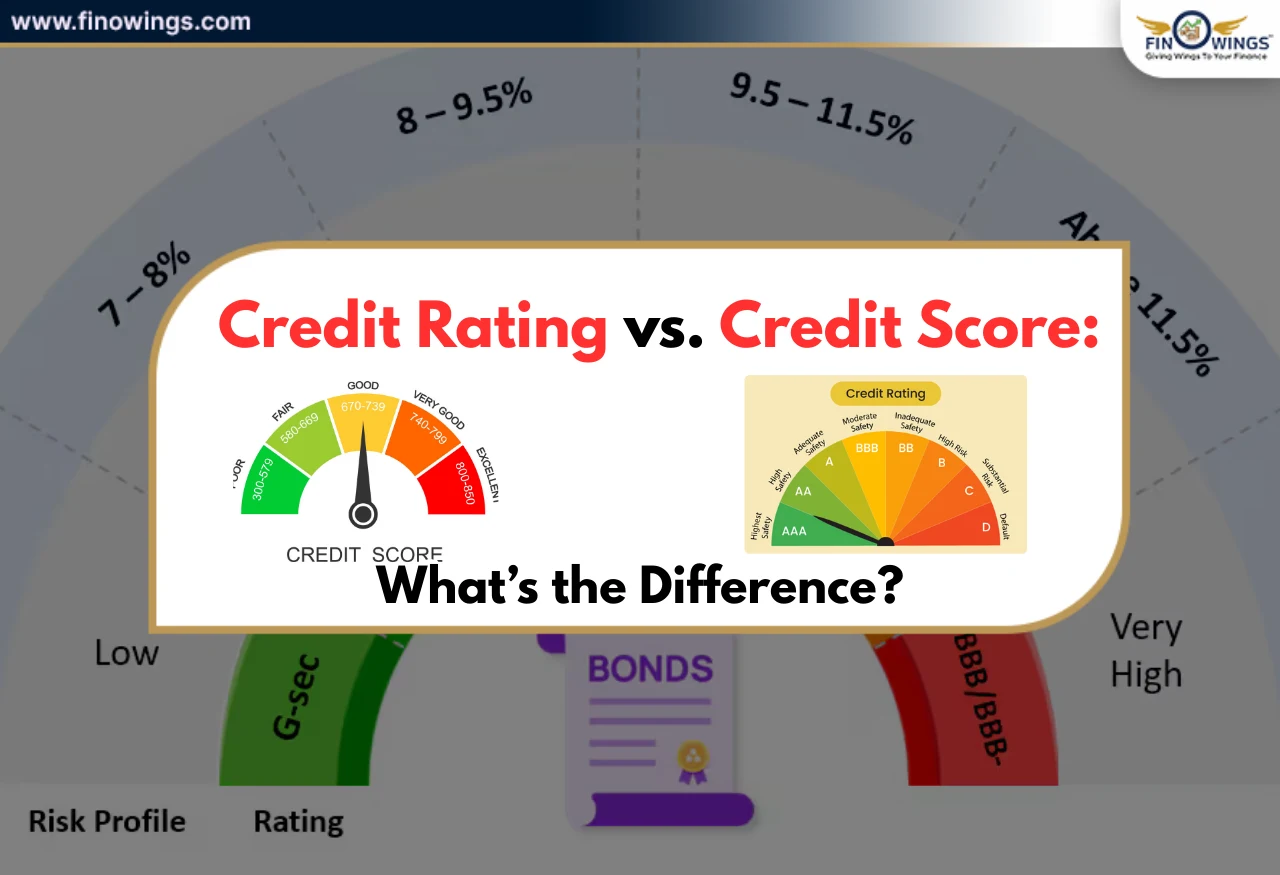Home >> Blog >> Difference Between Consolidated and Standalone Financial Statements
Difference Between Consolidated and Standalone Financial Statements

Table of Contents
Introduction
Entering the universe of investing as an individual investor may be a wild journey. For newcomers, it might be challenging to comprehend ratios and interpret financial statements, including balance sheets and income statements. And after learning that there are various financial reports kinds, including consolidated and standalone.
1. What are Standalone Financials?
Standalone Financials statements depict a singular entity's situation and show the entity's financial statement as a single unit.
By analyzing the standalone financial statements, the investor will only be conscious of the situation of its subsidiaries, which could influence investment choices.
For example, the parent business might not have any debt, but its subsidiaries might be deeply indebted, and the solo financials might not include this essential data.
2. What are Consolidated Financials?
The group's financial situation, including the parent and its subsidiaries, is represented by consolidated finances.
The weakness of the standalone is solved by reviewing the consolidated financials, giving the investor a comprehensive understanding of the entity's financial status.
The consolidated provides a comprehensive overview of the company and effectively equips the buyer to make investment choices.
For example, by reviewing the combined finances, it would be possible to find the subsidiary's significant debt in its records. Still, it had been overlooked when the parent's standalone finances were examined.
On the other hand, consolidated financial statements are more useful for investors, regulators, and consumers to assess the entire situation of the entity because the subsidiaries constitute one economic force.
For example,
-
The parent and the subsidiary conduct business as though they are unconnected. For instance, a carmaker might own the business that manufactures its transmissions, but it still pays that business to supply the transmissions.
Or
-
To recoup the money it spent on the subsidiary from its operations, the parent firm helps the subsidiary with financial difficulties.
These transactions will appear on standalone financial accounts because they impact the units' profitability. However, because they do not affect the larger company's general character, such transactions do not reflect on consolidated financial statements.
-
Whenever a parent-owned share is in a subsidiary, the share is treated differently in the parent and subsidiary accounts; in the subsidiary's balance sheet, the stock is treated as equity rather than an asset.
-
Each entity records the transaction to be displayed individually on its cash flow or income statements when it purchases something from the parent or conversely. When one party lends money to another, both sides handle the situation differently; the loan appears on the lender's balance sheet as an asset and the borrower as a liability.
-
Intra-company transactions will be removed throughout consolidation to prevent the double reporting of the transactions.
-
The financial situation of the listed firms' non-listed subsidiaries is not included in the financial statement. An investor must accordingly examine the standalone and consolidated financials to learn how the subsidiary companies used their cash or investments.
3. What is the difference Between Standalone & Consolidated?
Most financial professionals advise stock investors to review a firm's consolidated financial reports before purchasing its shares.
It is because it provides a comprehensive view of a firm's earnings. Include its holding businesses and subsidiaries. Your risk reaching the wrong conclusion if you only consider a company's solo financial statements and overlook the consolidated financial statements.
Example:
Considering you believe Reliance Retail will expand at a solid rate shortly, you intend to invest in Reliance Industries' stock. You examine Reliance Retail's standalone report and discover that it is financially sound, has little debt and high-quality assets, and is the ideal base to take advantage of the changing retail industry.
Becoming a part of Reliance Industries, Reliance Retail would be impacted by the success or failure of the group of businesses. Consequently, it is crucial to study the consolidated statements.
It's crucial to make sure you respect a firm's solitary statement. The ideal strategy is thoroughly examining financial reports to understand a company's financial health.
Some distinctions between standalone and consolidated statements
Analyzing the company's financial condition is more manageable by looking at the consolidated and standalone balance sheets. You might not see the effects of other subsidiary businesses' debt if you only examine the standalone statement.
-
Ratios of P/E
While making a choice, many investors consider the Price to Earnings (P/E) Ratio. Ensure to compute the P/E Ratio using the consolidated financial statements if you're working at a big company with affiliates and subsidiaries. In these circumstances, solo statements may provide an evaluation that is lacking.
Always assess standalone and consolidated statements in light of the company you intend to invest in. Standalone statements may be a better choice if you're seeking to compare various businesses in the same industry.
Consider consolidated statements carefully if you examine a company with subsidiaries operating in a related industry. However, it would be best to concentrate on independent statements examining a corporation whose subsidiaries operate in various industry sectors.
4. Financial Statements – Case Study
Assuming that XYZ Ltd. has no independent commercial operations and only invests in its subsidiaries, we can examine standalone and consolidated financial statements.
Through its profit and loss report (P&L), XYZ Ltd. only reports the dividend income it receives from its subsidiaries.
Let's further suppose that ABC Ltd's subsidiaries suffer significant losses.
To survive, some subsidiaries, such as XYZ Ltd, borrow money from banks to pay dividends to their shareholders.
If, in this kind of case, a potential investor takes into account XYZ Ltd's standalone financials,
-
The results will reveal that XYZ Ltd has very low debt and is profitable due to the dividend it has earned from its investments in its subsidiaries.
-
But if the investor looked at XYZ Ltd consolidated financials, they would quickly see that the company (as a whole, such as its subsidiaries) is losing a lot of money and has outstanding debt.
-
The investor would be immediately aware of the issues XYZ Ltd. was having.
-
However, the investor may make a wiser investment choice after analyzing the consolidated financials of XYZ Ltd.
5. Which financial statements should be examined?
-
Assessing the consolidated financial statement is preferable to analyzing the standalone financial statement based on the prior understanding of the consolidated and solo financial statements.
-
The investor is fully aware of all transactions and data when examining the consolidated financials, which may be lacking while studying the separate standalone financials.
-
In the consolidated financials, for example, the debt structure that seems favourable in the parent book but to be highly indebted in the subsidiary book may be accurately documented and understood.
-
In addition, the investor should focus more on the consolidated financials while simultaneously carefully examining the standalone financials because doing so will enable a more thorough study and a better knowledge of the financials on an individual basis.
Conclusion
As a business expands, it frequently creates new subsidiaries or acquires more companies. As a result, investors may need help to evaluate the company's performance using standalone or consolidated financial statements.
As a result, you should evaluate both statements to understand the company's financial situation better.
Author
Frequently Asked Questions
Before purchasing shares, most financial specialists advise investors to review a consolidated statement. It provides a thorough overview of the business, its divisions, and holding entities. However, a solitary statement will only give you a vague impression of the company's success.
Whenever one firm controls more than 50% of another firm's outstanding common voting stock, or when that authority is not temporary or not in the control of the majority owner, consolidated reports must be prepared (For instance, when a corporation or companies are under administration).
LLPs and partnership firms must be together because "entity" includes a corporation and any other entity type. An enterprise controlled by the parent is to be consolidated under Accounting Standard 21 by the concept of the subsidiary.
Summary. Any transactions comprising interactions between the consolidated firms are eliminated from the consolidated financial reports using intercompany eliminations in a consolidation model. Loans, stock ownership, intercompany income, and expenditures are typical illustrations of intercompany eliminations.
Suppose the parent business is a wholly-owned subsidiary of a partially-owned subsidiary of another organization. Its other owners, such as those without voting rights, have been notified and do not object to the parent not presenting consolidated financial reports. In that case, the parent business will meet the exemption requirements.















